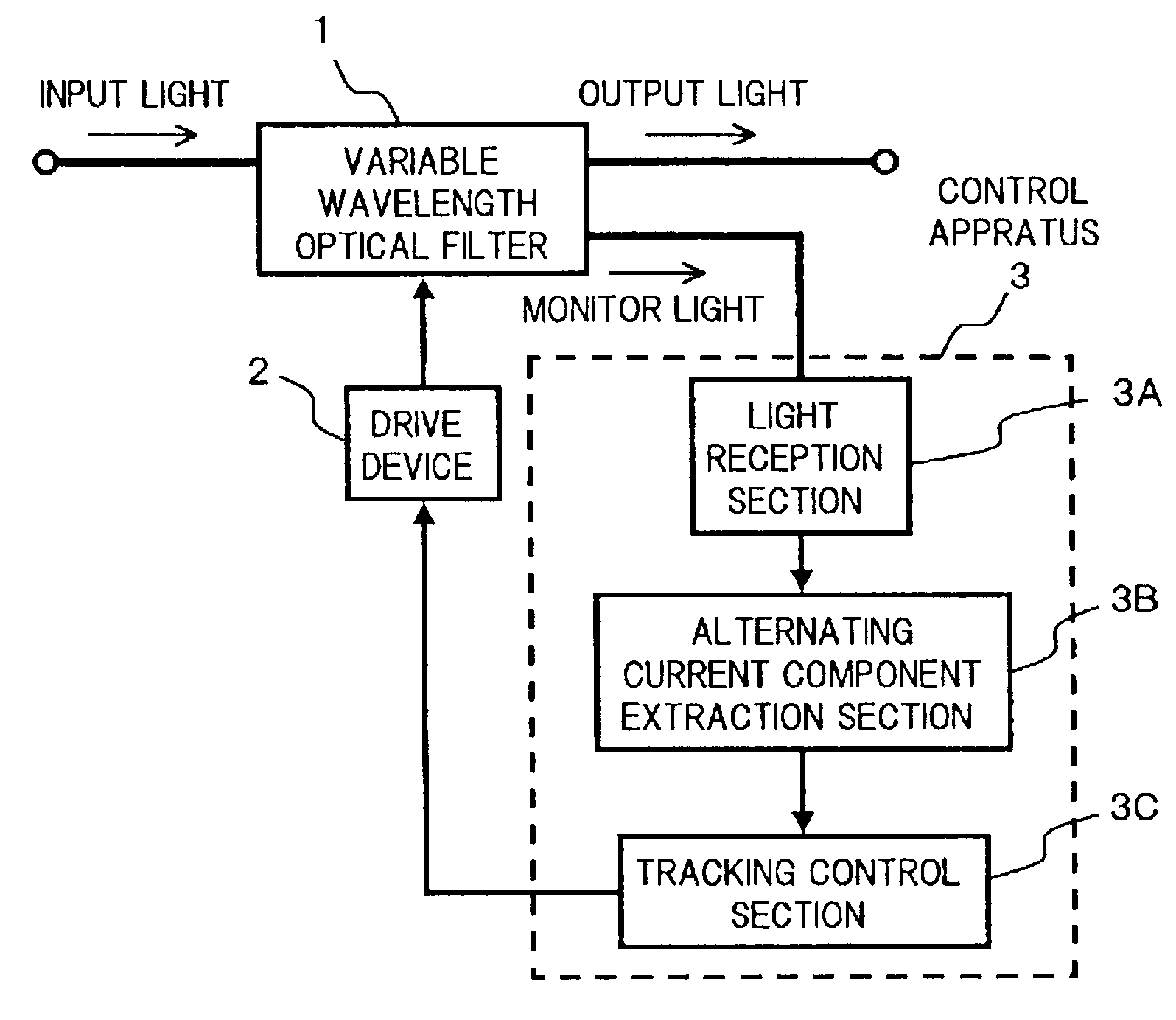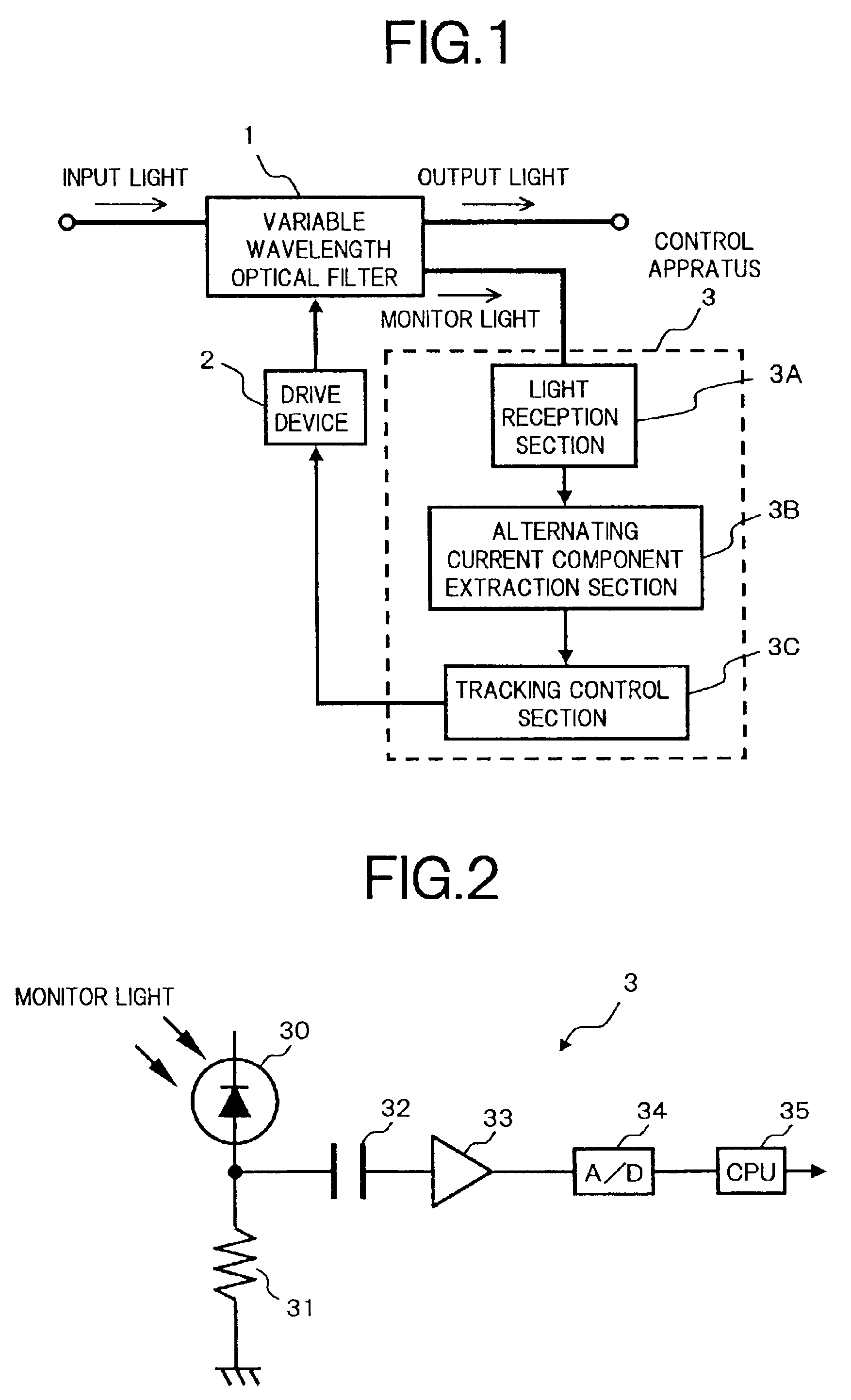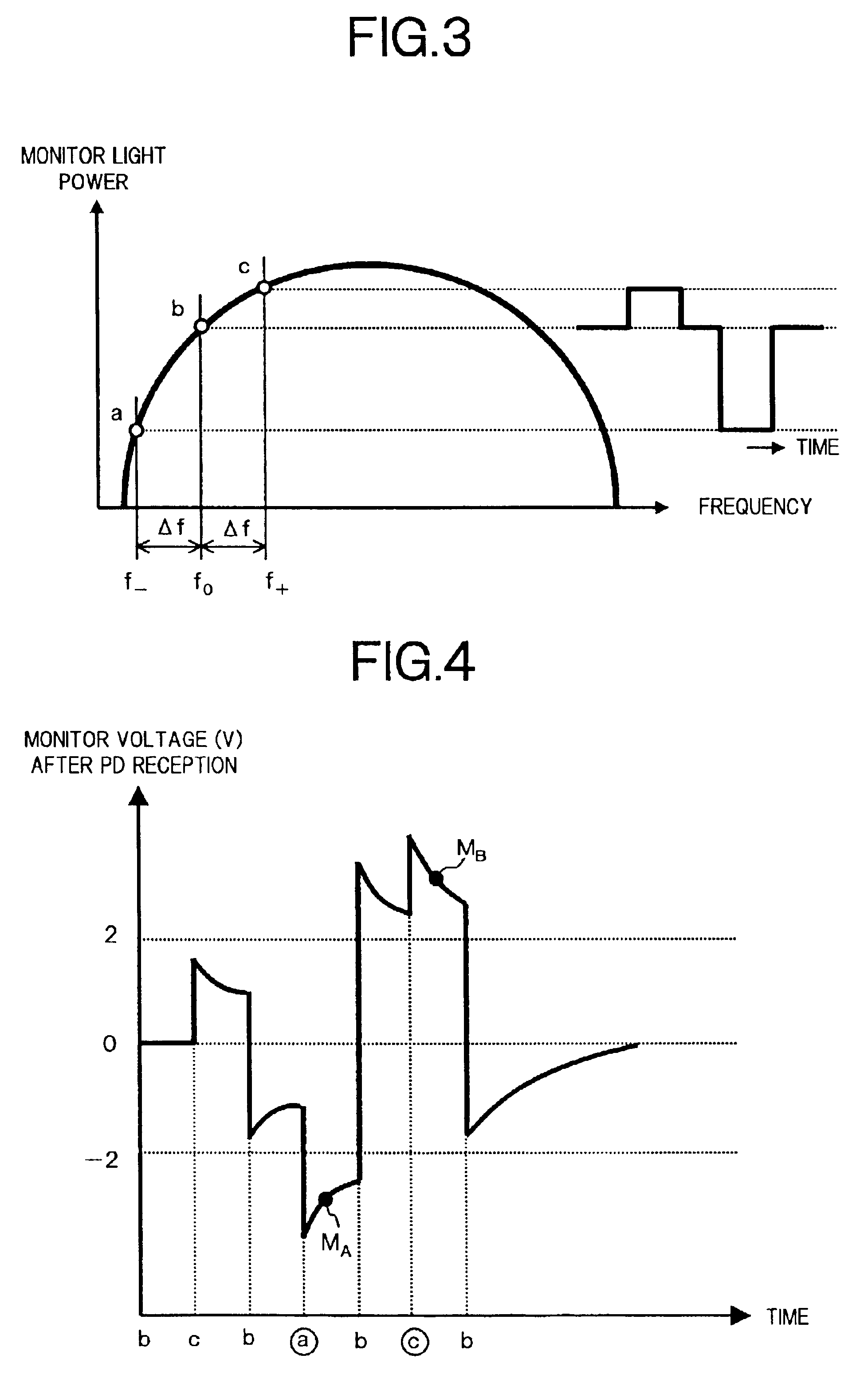Control method and control apparatus for variable wavelength optical filter
a control method and control apparatus technology, applied in multiplex communication, electromagnetic repeaters, instruments, etc., can solve the problems of deterioration of the rejection level, high reliability and flexibility of the network, and increase the cost of the node on a larger scale, so as to achieve reliable and stable performance
- Summary
- Abstract
- Description
- Claims
- Application Information
AI Technical Summary
Benefits of technology
Problems solved by technology
Method used
Image
Examples
first embodiment
[0051]FIG. 1 is a block diagram showing a control apparatus for a variable wavelength optical filter according to the present invention.
[0052]In FIG. 1, a variable wavelength optical filter 1 which is a device capable of selectively separating in collective, optical signals of desired multiple wavelengths from WDM signal light, can variably set wavelengths of optical signals to be collectively processed, in response to a drive signal from a drive device 2. A control apparatus 3 that tracking controls wavelength setting of the variable wavelength optical filter 1, includes, for example, a light reception section 3A, an alternating current component extraction section 3B and a tracking control section 3C.
[0053]The light reception section 3A receives monitor light taken out from the variable wavelength optical filter 1 and generates an electrical signal corresponding to total power thereof. The alternating current component extraction section 3B extracts an alternating current componen...
second embodiment
[0067]Next is a description of the control apparatus of the variable wavelength optical filter according to the present invention.
[0068]FIG. 5 is a circuit diagram showing a specific configuration example of the control apparatus of the second embodiment.
[0069]In FIG. 5, the configuration of a control apparatus 3a of the present embodiment is different from the configuration of the aforementioned control apparatus 3 shown in the FIG. 2, in that a low pass filter (LPF) 36 is inserted between the output terminal of the amplifier 33 and the input terminal of the A / D converter 34. The components other than the above are the same as for the case of the first embodiment.
[0070]The low pass filter 36 is a typical high frequency cut-off filter cutting off components of frequencies equal to or higher than a preset frequency, for an input signal. This low pass filter 36 is provided, for example, in the case where there is an optical power variation or an output variation in an optical amplifie...
third embodiment
[0074]As follows is a description of the control apparatus for the variable wavelength optical filter according to the present invention.
[0075]FIG. 8 is a circuit diagram showing a specific configuration example of the control apparatus of the third embodiment.
[0076]In FIG. 8, a control apparatus 3b of the present embodiment is constituted such that, for example in the configuration of the aforementioned second embodiment (FIG. 5), an absolute value of the power of the received monitor light is detected, so that the detection result can be utilized in the tracking control. More specifically, there is added a circuit configuration in which the voltage signal is dropped to be received by the A / D converter 34 through an amplifier 33DC and a low pass filter (LPF) 36DC, before taking out the alternating current component by the capacitor 32 from the voltage signal generated by receiving monitor light by the light receiver 30, that is, an input terminal of the amplifier 33DC is connected ...
PUM
| Property | Measurement | Unit |
|---|---|---|
| frequency | aaaaa | aaaaa |
| frequency | aaaaa | aaaaa |
| voltage | aaaaa | aaaaa |
Abstract
Description
Claims
Application Information
 Login to View More
Login to View More - R&D
- Intellectual Property
- Life Sciences
- Materials
- Tech Scout
- Unparalleled Data Quality
- Higher Quality Content
- 60% Fewer Hallucinations
Browse by: Latest US Patents, China's latest patents, Technical Efficacy Thesaurus, Application Domain, Technology Topic, Popular Technical Reports.
© 2025 PatSnap. All rights reserved.Legal|Privacy policy|Modern Slavery Act Transparency Statement|Sitemap|About US| Contact US: help@patsnap.com



